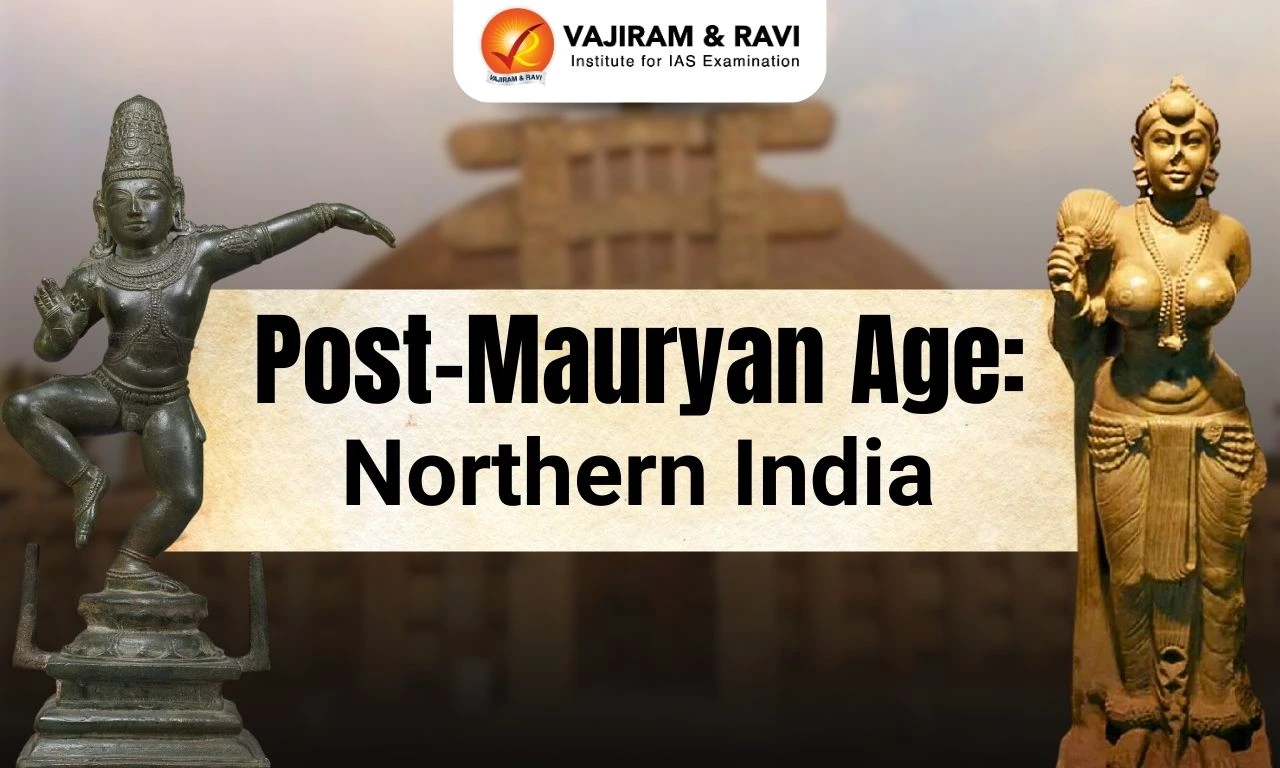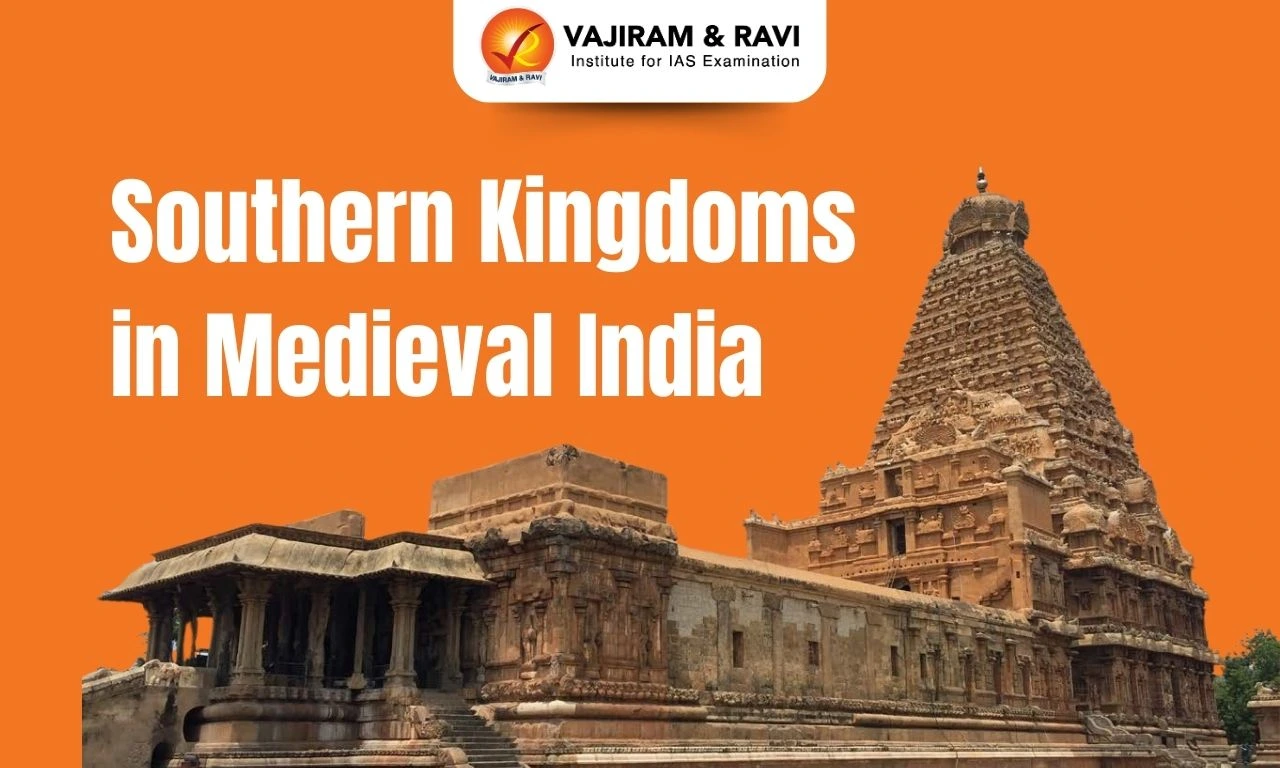Upanishads, derived from the Sanskrit terms meaning "to sit down near" the teacher, are foundational texts in Indian philosophy, composed between 700 B.C.E. and 300 B.C.E. They mark a shift from Vedic rituals to profound philosophical inquiry, exploring concepts such as the self (Atman) and the ultimate reality (Brahman).
Among over 200 Upanishads, the Muktika Canon identifies 108 significant texts, with key works like the Brihadaranyaka and Chandogya Upanishads providing deep spiritual insights. These texts greatly influenced Hindu philosophy, giving rise to schools such as Advaita and Dvaita, and emphasising knowledge over ritualistic practices.
Upanishads Meaning
Upanishads Meaning is derived from u (at), pa (foot), ni (down), and s(h)ad (to sit), meaning "to sit down near" the teacher. This aptly describes the tradition where students sat near their guru in the forest to learn these teachings orally, a practice rooted in the guru-shishya parampara.
- Over time, the term acquired the meaning of "secret teaching" or "esoteric doctrine" (Rahasya), reflecting the confidential nature of the teachings shared during such gatherings.
- Upanishads are often referred to as Rahasya (secret) or Guhya (mystery) due to the profound and concealed wisdom they offer.
- Within the Upanishads, this sense of secrecy is evident as teachers sometimes withhold knowledge from students who have not demonstrated their readiness or worthiness to receive it.
- Although the term primarily denotes knowledge, it also indirectly signifies the texts or scriptures that preserve this sacred wisdom.
- Over 200 Upanishads are known, with the texts written in Sanskrit, offering a monastic and mystical interpretation of the Vedas. Being the final section of the Vedas, they are also referred to as Vedanta ("end of the Veda").
Vedic Upnishads
Vedic Upanishads are ancient Sanskrit texts forming the philosophical core of Hinduism and the concluding portion of the Vedas, known as Vedanta. They explore profound questions about the self (Atman), ultimate reality (Brahman), and the universe, introducing central ideas like karma, dharma, moksha, and samsara. The Upanishads mark a shift from ritualistic practices to spiritual knowledge.
Upanishads Origin
The origin of the Upanishads can be traced back to ancient India, where they were composed between 700 BCE and 300 BCE in Sanskrit. The Upanishads are among the most significant texts in Indian philosophy and spiritual thought. As the final section of the Vedas, they represent a shift from Vedic ritualism to deep philosophical inquiry.
- The earliest six Upanishads, such as Brihadaranyaka and Kena, are generally believed to have been composed between 800 and 500 BCE. The next seven, from Katha to Mandukya, are thought to be of a later period.
- While some Upanishads are traditionally associated with specific sages, the authorship of many remains unknown.
- Upanishads explore the nature of existence, the self (Atman), the ultimate reality (Brahman), and the purpose of life, addressing fundamental questions about consciousness, the afterlife, and the nature of reality.
- The Upanishads had a profound influence on Hindu philosophy, giving rise to schools of thought like Advaita Vedanta (non-dualism), Vishishtadvaita (qualified monism), and Dvaita (dualism).
- These schools debated the relationship between Atman (self) and Brahman (universal reality), each offering unique interpretations of the Upanishadic teachings.
- Their reach expanded beyond India when Dara Shikoh, a Mughal prince, translated the Upanishads into Persian in the 17th century, believing they contained universal truths transcending any single religion.
Upanishads Central Concepts
Upanishads' central concepts explore profound philosophical ideas like Atman (individual soul), Brahman (universal reality), Karma (cause and effect), and Moksha (liberation), guiding spiritual understanding and self-realisation in Hindu philosophy.
- Atman and Brahman: The Upanishads revolve around the relationship between Atman (the individual soul) and Brahman (the ultimate reality), teaching that realising their unity leads to spiritual liberation.
- Self-realisation: The purpose of life is to achieve self-realisation by becoming aware of and connected with one’s true inner self. This understanding helps one live in harmony with the universe's eternal order, ultimately leading to a reunion with Brahman after death.
- Karma (Action and Consequence): Karma emphasises that every action has consequences, influencing one's future experiences. It underscores the moral responsibility of individuals in shaping their destinies through righteous actions.
- Moksha (Liberation): Attaining moksha, or liberation from the cycle of samsara, is the ultimate goal. This is achieved through self-realisation, meditation, and detachment from material desires.
Upanishads Divisions
Upanishads Divisions are primarily based on their association with the four Vedas—Rigveda, Yajurveda (further divided into Shukla and Krishna), Samaveda, and Atharvaveda—as outlined in the Muktikopanishad, which lists a total of 108 Upanishads. Of these, thirteen are considered principal Upanishads due to their profound philosophical teachings and spiritual insights.
Upanishad Brihadaranyaka
Known as the "Great-forest-teaching," the Brihadaranyaka Upanishad is part of the Shatapatha Brahmana of the Shukla Yajurveda. It is primarily composed in prose form, with a few verses interspersed. The main objective of this Upanishad is to explore the concept of the self (Atman) and establish its identity with the ultimate reality (Brahman), offering profound insights into spiritual philosophy.
Upanishad Chandogya
Associated with the Taandya Brahmana of the Samaveda, the Chandogya Upanishad is an extensive text that outlines various fields of study, including the Veda, itihasa, Purana, spiritual knowledge, grammar, mathematics, ethics, astronomy, and more. It provides a comprehensive view of spiritual and worldly knowledge, making it an essential part of the Indian philosophical tradition.
Upanishad Aitareya
The Aitareya Upanishad is a principal Upanishad belonging to the Rigveda, attributed to the sage Aitareya Mahidasa. It is a concise text with three parts containing 33 verses. This Upanishad is renowned for presenting the famous Mahavakya "Prajnanam Brahman," which means "Brahman is consciousness," making it a foundational text for Vedantic philosophy.
Upanishad Isha
Also known as Isavasya Upanishad, this text is brief but profound, containing only 18 verses. Despite its concise nature, it encapsulates the core teachings of Hinduism, offering guidance on understanding the self, the nature of the universe, and the path to liberation (moksha).
Upanishad Kaushitaki
Kaushitaki Upanishad is associated with the Rigveda and is also referred to as Sankhyayana Brahmana. It consists of 30 chapters, focusing on rituals related to food sacrifice and Soma sacrifice. It has been referenced by Adi Shankaracharya in his Brahmasutra and by Panini in his Astadhyayi.
Upanishad Taittiriya
Forming part of the Taittiriya Aranyaka of the Krishna Yajur Veda, this Upanishad emphasises that Brahman is the eternal, imperishable reality pervading the universe. It explores various aspects of knowledge, including the nature of the self and the pursuit of spiritual wisdom.
Upanishad Katha
Belonging to the Krishna Yajurveda, the Katha Upanishad narrates the story of Nachiketa, the son of Sage Vajasravasa, who engages in a profound dialogue with Yama, the deity of death. Their conversation delves into the nature of the self, the concept of knowledge, and the path to liberation.
Upanishad Shvetashvatara
Part of the Krishna Yajur Veda, Shvetashvatara Upanishad explores the philosophy of Advaita (Monism) and emphasises Advaita Bhakti (devotion to the one supreme reality). It comprises 113 verses divided into six chapters and is regarded as a foundational text of Vedanta philosophy.
Upanishad Maitrayani
Associated with the Maitrayani Samhita of the Krishna Yajurveda, Maitrayani Upanishad presents teachings in the form of a dialogue between a master (Guru) and a disciple (Sishya). It has significantly influenced major schools of Yoga and Hindu philosophy, offering insights into spiritual knowledge.
Upanishad Mandukya
The Mandukya Upanishad is the shortest among all Upanishads and is linked to the Atharvaveda. Composed in prose with just twelve verses, it is a foundational text exploring the nature of reality, consciousness, and the relationship between Hinduism and Buddhism.
Upanishad Mundaka
Upanishad Mundaka, belonging to the Atharva Veda, focuses on the nature of knowledge and liberation. It emphasises the greatness of spiritual teachings, presenting Brahman as the cause of the universe and guiding individuals toward self-realisation.
Upanishad Prasna
Derived from the Atharva Veda, the Prasna Upanishad is known for its question-and-answer format, exploring profound spiritual concepts. Often considered a commentary on the Mundaka Upanishad, it provides clarity on fundamental philosophical questions.
Upanishad Kena
Associated with the Sama Veda, Kena Upanishad is also called the Talavakara Upanishad. It consists of four chapters and 34 mantras, featuring a dialogue between a Guru and a disciple, along with allegorical stories to explain the nature of Brahman.
Upanishads Importance
The Upanishads are foundational texts of Indian philosophy, offering profound insights into spiritual knowledge, self-realisation, and the nature of reality. They have significantly shaped various philosophical systems and Indian cultural heritage.
- Foundation for Schools of Indian Philosophy: The Upanishads hold a pivotal role in Indian philosophy, serving as the foundational source for various schools of thought, including Vedanta, Sankhya, Nyaya, and Yoga, shaping their doctrines.
- Integration with Vedas: Integrated with the Vedas, the Upanishads complete the spectrum of Vedic knowledge, emphasising respect for Vedic teachings and incorporating verses like the Gayatri for meditation.
- Emphasis on Brahmavidya: The Upanishads prioritise Brahmavidya, or the knowledge of Brahman, as supreme, highlighting that anyone with true knowledge can be a teacher, regardless of caste or social status.
- Mahavakyas: They are known for the profound Mahavakyas (great sayings) from each Veda, such as "Prajnanam Brahma" (Rigveda), "Aham Brahmasmi" (Yajurveda), "Tattvamasi" (Samaveda), and "Ayamatma Brahma" (Atharvaveda).
Difference Between Vedas and Upanishads
The Vedas and Upanishads are foundational texts in Hinduism, each serving distinct purposes. The Vedas are the earliest sacred scriptures of Hinduism, primarily focusing on hymns, rituals, and ceremonies. In contrast, the Upanishads delve into philosophical inquiries, exploring concepts like the soul (Atman) and ultimate reality (Brahman).
- The Vedas were composed between 1200 and 400 BCE, while the principal Upanishads were written later, roughly between 700 and 400 BCE.
- There are four Vedas- Rigveda, Samaveda, Yajurveda, and Atharvaveda, containing sections like Samhitas, Brahmanas, Aranyakas, and Upanishads. The Upanishads form the concluding part of the Vedas and are sometimes called Vedanta, meaning the “end of the Vedas”.
- While the Vedas emphasise performing rituals to appease deities and ensure cosmic order, the Upanishads focus on understanding the self and achieving liberation (moksha) through knowledge and meditation.
Upanishads UPSC PYQs
Q1. Consider the following statements: (UPSC Prelims 2024)
- There are no parables in Upanishads.
- Upanishads were composed earlier than the Puranas.
Which of the statements given above is/are correct?
(a) 1 only
(b) 2 only
(c) Both 1 and 2
(d) Neither 1 nor 2
Answer: (b)
Q2. The national motto of India, 'Satyameva Jayate' inscribed below the Emblem of India is taken from (UPSC Prelims 2014)
(a) Katha Upanishad
(b) Chandogya Upanishad
(c) Aitareya Upanishad
(d) Mundaka Upanishad
Answer: (d)
| Other Related Articles | |
| Indus Script | Jain Literature |
| Upanishads | Sangam Age |
| Vedangas | |
Last updated on December, 2025
→ Check out the latest UPSC Syllabus 2026 here.
→ Join Vajiram & Ravi’s Interview Guidance Programme for expert help to crack your final UPSC stage.
→ UPSC Mains Result 2025 is now out.
→ UPSC Notification 2026 is scheduled to be released on January 14, 2026.
→ UPSC Calendar 2026 is released on 15th May, 2025.
→ The UPSC Vacancy 2025 were released 1129, out of which 979 were for UPSC CSE and remaining 150 are for UPSC IFoS.
→ UPSC Prelims 2026 will be conducted on 24th May, 2026 & UPSC Mains 2026 will be conducted on 21st August 2026.
→ The UPSC Selection Process is of 3 stages-Prelims, Mains and Interview.
→ UPSC Result 2024 is released with latest UPSC Marksheet 2024. Check Now!
→ UPSC Prelims Result 2025 is out now for the CSE held on 25 May 2025.
→ UPSC Toppers List 2024 is released now. Shakti Dubey is UPSC AIR 1 2024 Topper.
→ UPSC Prelims Question Paper 2025 and Unofficial Prelims Answer Key 2025 are available now.
→ UPSC Mains Question Paper 2025 is out for Essay, GS 1, 2, 3 & GS 4.
→ UPSC Mains Indian Language Question Paper 2025 is now out.
→ UPSC Mains Optional Question Paper 2025 is now out.
→ Also check Best IAS Coaching in Delhi
Upanishads FAQs
Q1. What do you mean by Upanishads?+
Q2. What are the 11 main Upanishads?+
Q3. Who wrote the Upanishad?+
Q4. What is the difference between Vedas and Upanishads?+
Q5. Do Upanishads talk about God?+

















